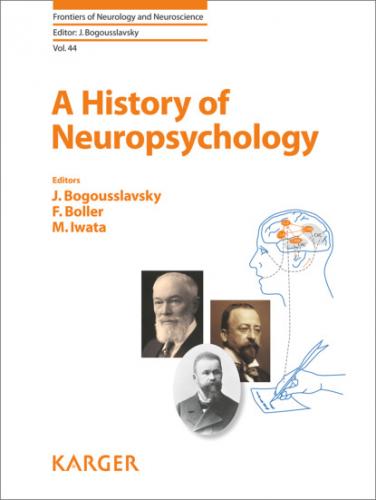Behavioral assessment is nevertheless of importance since impairments are strongly related to poor outcome. Together with the interaction of pre-morbid factors such as personality and cognitive deficits, behavioral deficits diminish independent social behavior and increase social handicap [28]. However, measuring behavior directly faces the normality issue. In analogy to Mesulam questioning the existence of standards regarding behavior [4], this raises the necessity to consider an individual’s behavior in its entirety, which includes pre-morbid functioning, interindividual and cultural differences. Finally, as an encouraging perspective, it is worth noting that behavioral disorders can benefit from neurorehabilitation: both individual and group training programs have shown successful results [29, 30].
Acknowledgements
The authors would like to thank Ian Gatfield for language editing and proofreading.
References
1American Psychiatric Association and American Psychiatric Association DSM-5 Task Force, Diagnostic and Statistical Manual of Mental Disorders: DSM-5, ed 5. Washington, DC, American Psychiatric Publishing, 2013.
2Harlow JM: Recovery from the passage of an iron bar through the head. Publ Mass Med Soc 1868;2:327–347.
3Damasio H, et al: The return of Phineas Gage: clues about the brain from the skull of a famous patient. Science 1994;264:1102–1105.
4Mesulam MM: Frontal cortex and behavior. Ann Neurol 1986;19:320–325.
5Eslinger PJ, Damasio AR: Severe disturbance of higher cognition after bilateral frontal lobe ablation: patient EVR. Neurology 1985;35:1731–1741.
6Manjila S, et al: Understanding Edward Muybridge: historical review of behavioral alterations after a 19th-century head injury and their multifactorial influence on human life and culture. Neurosurg Focus 2015;39:E4.
7International neurological congress in London. Later proceedings. Br J Med 1935;2:269–272.
8Brickner RM: Brain of patient A. after bilateral frontal lobectomy; status of frontal-lobe problem. AMA Arch Neurol Psychiatry 1952;68:293–313.
9Hebb DO: Man’s frontal lobes. AMA Arch Neurol Psychiatry 1945;54:10–24.
10Hebb DO, Penfield W: Human Behavior after extensive bilateral removal from the frontal lobes. Arch Neur Psych 1940;44:421–438.
11Luria AR, Pribram KH, Homskaya ED: An experimental analysis of the behavioral disturbance produced by a left frontal arachnoidal endothelioma (meningioma). Neuropsychologia 1964;2:257–280.
12Bechara A, et al: Deciding advantageously before knowing the advantageous strategy. Science 1997;275:1293–1235.
13Saver JL, Damasio AR: Preserved access and processing of social knowledge in a patient with acquired sociopathy due to ventromedial frontal damage. Neuropsychologia 1991;29:1241–129.
14Manjila S, et al: Modern psychosurgery before Egas Moniz: a tribute to Gottlieb Burckhardt. Neurosurg Focus 2008;25:E9.
15Freeman W: Psychosurgery. J Natl Med Assoc 1950;42:206–209.
16Blumer D, Benson DF: Personality Changes with Frontal and Temporal Lobe Lesions, in Psychiatric Aspects of Neurological Disease, D.F. Benson and D. Blumer, Editors. New York, Grune and Stratton, 1975.
17Lishman WA: Brain damage in relation to psychiatric disability after head injury. Br J Psychiatry 1968;114:373–410.
18Grafman J, et al: Frontal lobe injuries, violence, and aggression: a report of the Vietnam head injury study. Neurology 1996;46:1231–1238.
19Beck AT: Beck Depression Inventory Manual. San Antonio, TX, The Psychological Corporation, 1987.
20Katz M, Lyerly S: Methods for measuring adjustment and social behavior in the community. 1. Rationale, description, discriminative validity and scale development. Psychol Rep 1963;13:503–535.
21Levin HS, et al: The neurobehavioural rating scale: assessment of the behavioural sequelae of head injury by the clinician. J Neurol Neurosurg Psychiatry 1987;50:183–193.
22Lhermitte F, Pillon B, Serdaru M: Human autonomy and the frontal lobes. Part I: Imitation and utilization behavior: a neuropsychological study of 75 patients. Ann Neurol 1986;19:326–334.
23Lhermitte F: Human autonomy and the frontal lobes. Part II: Patient behavior in complex and social situations: the “environmental dependency syndrome”. Ann Neurol 1986;19:335–343.
24Eslinger PJ, et al: Developmental consequences of childhood frontal lobe damage. Arch Neurol 1992;49:764–769.
25Price BH, et al: The comportmental learning disabilities of early frontal lobe damage. Brain 1990;113(pt 5):1383–1393.
26Anderson SW, et al: Impairment of social and moral behavior related to early damage in human prefrontal cortex. Nat Neurosci 1999;2:1032–1037.
27Blair RJ, Cipolotti L: Impaired social response reversal. A case of ‘acquired sociopathy’. Brain 2000;123(pt 6):1122–1141.
28Wood RL,
